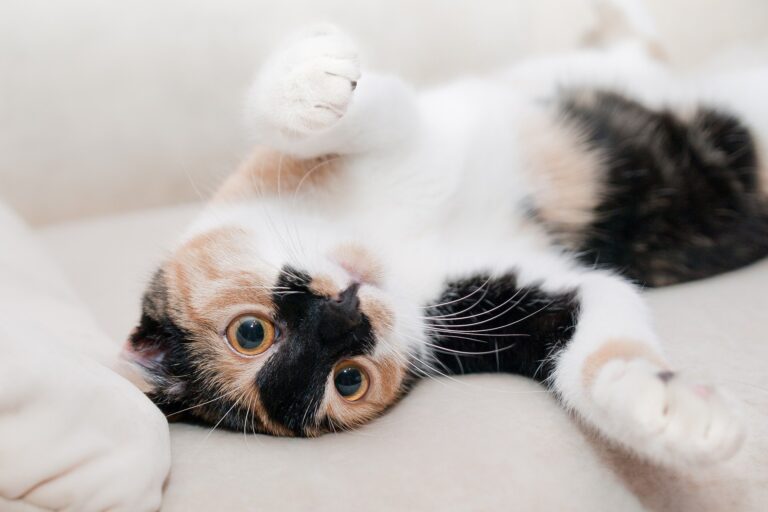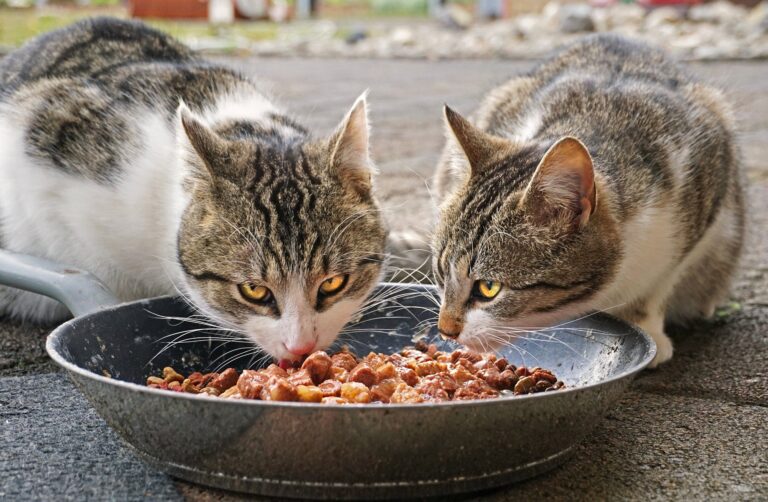Twice a year it happens: your cat loses its fur. In spring and autumn, you will certainly find a lot of hair in your home. This can be a very stressful time for your little pussycat. Here you can find out what you should pay special attention to.
Why Do Cats Change Their Coat?
In autumn the days become shorter and the daylight decreases more and more. Your cat reacts to this change. Melatonin, a hormone that controls the day-night rhythm, is produced more frequently. Due to these factors, the light summer coat is exchanged for a thick winter coat. The colder the temperatures are, the more undercoat your cat will produce. In spring, the topcoat becomes shorter and the undercoat lighter. You may have noticed a change in coat color during this time. This phenomenon can occur due to the increased production of melanin. Depending on the season, the coat turns lighter or darker. In some cat species like the Siamese, even the skin temperature plays a role in the coat color.
The change of coat in free roamers usually lasts 6-8 weeks. Free-rangers perceive temperature differences faster and stronger, which is why the change of coat is more intense. Apartment cats are not exposed to the cold outside temperatures and therefore lose their fur over a longer period of time. Especially between April and October, you will find more cat hair on your furniture. A change of coat is quite normal and a visit to the vet is not necessary. Only if additional hair loss or itching occurs, you should see a doctor.
How To Help Your Cat With Shedding
The change of coat can be quite exhausting for your cat. Especially older cats and longhaired cats suffer from the load of loose hair. The organism runs at full speed and consumes energy, which affects the defenses of your cat. Fungal infections can now occur more frequently.
You certainly want to help your cat during this time and make the change of coat as pleasant as possible. The following tips will make it especially easy for you and your cat.
Coat Care By Frequent Brushing
During the time of the change of coat, it makes sense to brush your cat daily. It is important to always brush in the direction of the coat. With longhaired cats, pay special attention to areas under the legs and on the belly, because small tangles and knots often develop in these places. Most cats do not like the touches on the belly, so it is best to start in small increments and slowly get them used to be touched with a brush. In general, it is not uncommon for cats to refuse daily grooming, so you should start regular brushing at a young age.
Tip: Think of brushing your cat as a daily ritual. Choose a quiet place for grooming and reward your cat with a treat in between. After some time, your cat will get used to this routine and demand togetherness with you again and again.
Depending on the condition and length of the hair, you should use different brushes and combs for the coat change. It is best to try out different brushes with soft or harder bristles at the beginning and pay attention to your cat’s behavior. She will quickly show you which brush is accepted and which was a wrong decision. A coat glove can also be used to remove loose, superficial hair.
Tip: You have a longhaired cat and keep finding tangles and knots in the fur? Special felt hooks help to remove small knots. For particularly stubborn matting, the only thing that usually helps is to reach for the scissors. If your cat is frequently matted, this may not only be due to a change of coat. Check the mineral and vitamin content and check the coat regularly for possible tick bites.
The coat care of your cat always plays an important role and should not only be limited to the change of coat. However, it is especially important from April to October. Only if the coat care is done thoroughly and regularly, matting and hairballs can be avoided.
The Right Diet Plays An Important Role
If you want to do something good for your little four-legged friend, you should pay attention to good nutrition during the time of the coat change. Since the organism performs a great performance, proper food is very important for well-being. There are different types of wet and dry food, which have been specially adapted to the needs during this time. Foods with biotin, omega-3, and zinc not only provide shiny hair, they generally have a very positive effect on the coat. The performance of the organism is particularly well supported by high-quality food with a high meat content of 80%, without cereals and without additives.
If you do not want to change your cat’s food immediately, it is recommended to give different vitamins and nutrients. Oils are also a good way to ensure that your cat gets enough nutrients. Salmon oil is especially popular. It contains many omega-3 fatty acids, which promote coat quality and coat shine. Properly dosed, the fatty acids in the oil help build muscle and bone cells and support metabolism.
Tip: Oils are a good supplement, but should always be dosed sparingly. If too much oil is mixed into the food, it can cause digestive problems and diarrhea. To ensure that your cat benefits from oil like salmon oil, you should add very little to the food at first and follow the manufacturer’s recommendations. Generally, no more than a quarter teaspoon should be added daily and even less for small cats.
If your cat is prone to hairballs, a malt paste is recommended. Hair is more easily eliminated by the paste and does not form a large lump in the stomach, which can quickly lead to gastritis or intestinal obstruction.
Tip: The use of malt paste is a good aid in eliminating hair, but can become unhealthy in excessive amounts. The paste consists primarily of malt sugar and should only be given as a small treat. Usually, a much smaller amount than the manufacturer’s recommendations is enough. A healthier alternative is olive oil in the food.
You’ve seen a free-roaming cat nibble on the grass many times? This has a certain reason. The blades of grass bundle hair in the stomach and make it easier to regurgitate. If your cat can’t go out in the garden, indoor cat grass is a good alternative. This way, even apartment cats get a chance to nibble on the grass at any time and prevent a big ball of hair from forming in their stomachs.
Cats have their own will and so, of course, it may be possible that they will not accept the digestive aid. However, you should definitely try. Especially with indoor-only cats, otherwise they may nibble on your plants. They try to achieve the same effect with it, however, most houseplants are poisonous for cats and do not provide the same effect as grass. If you offer your little four-legged friend cat grass all year round, this behavior will certainly decrease.
Tip: Put the cat grass in a bright place so that your cat can nibble on it for a long time and you don’t have to buy a new one every few weeks. If your little four-legged friend doesn’t get enough of the cut grass, just put it out of reach for a while. Within a short time, the blades of grass will grow again.










2 thoughts on “Coat Change In Cats – What You Should Pay Attention To”